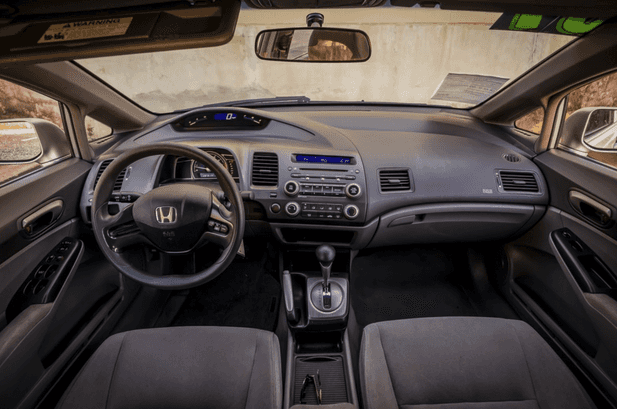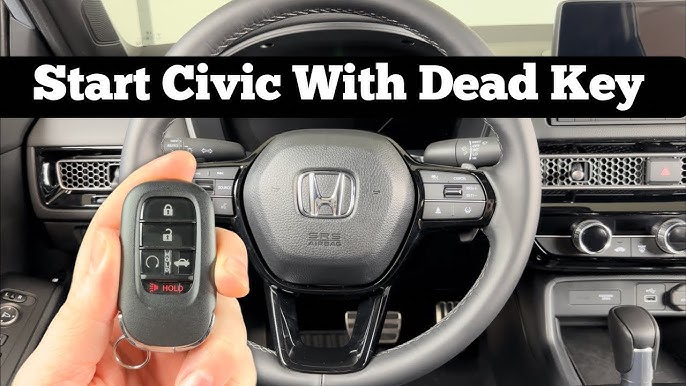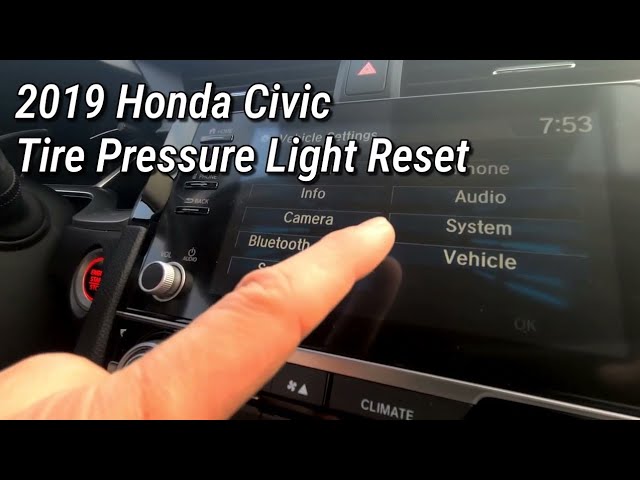As an Amazon Associate, I earn from qualifying purchases
If you own a Honda Civic or are thinking about getting one, you probably wonder, “How many miles can my car really last?” You want a vehicle that won’t let you down, mile after mile. Knowing how far your Civic can go helps you plan your budget and avoid unexpected surprises.
You’ll discover the factors that affect your car’s lifespan and tips to keep it running longer. By the end, you’ll feel confident about your Civic’s durability and ready to make smart decisions for your ride. Keep reading to learn everything you need to know!
Honda Civic Lifespan
The Honda Civic is famous for lasting a long time. Many people wonder how many miles they can expect from this car. Understanding the lifespan helps buyers and owners plan better. The Civic is built with quality parts and solid engineering. This makes it a reliable choice for daily driving.
Average Mileage Expectancy
Most Honda Civics can reach 200,000 miles or more. Some well-maintained models even hit 300,000 miles. Regular oil changes and timely repairs extend the car’s life. Driving habits also play a big role in mileage. Proper care keeps the engine running smoothly for years.
Factors Affecting Longevity
How long a Honda Civic lasts depends on several factors. Maintenance is the top factor in extending lifespan. Harsh weather and road conditions cause faster wear and tear. Frequent short trips can strain the engine over time. Using quality parts and fluids helps avoid early damage. Keeping up with scheduled service checks is essential. The way the car is driven matters too. Gentle driving reduces stress on parts and improves durability.

Credit: www.mynshonda.com
Engine Durability
The engine is the heart of a Honda Civic. Its durability largely decides how long the car lasts. Honda engines are known for their strength and reliability. With proper care, they can run for hundreds of thousands of miles. Understanding the engine’s build and signs of wear helps owners maintain their vehicles better.
Common Engine Types
Honda Civics come with various engine types over the years. The most common are the 4-cylinder engines. These engines balance power and fuel efficiency well. Examples include the D-series, B-series, and the newer L-series engines. Each type has slight differences but all are built to last. The VTEC technology in some engines improves performance and durability.
Signs Of Engine Wear
Recognizing engine wear early can save costly repairs. Watch for rough idling or strange noises from the engine. Excessive smoke from the exhaust signals possible problems. A drop in fuel efficiency often means engine issues. Engine overheating is a serious sign of wear. Oil leaks or burning oil also indicate trouble. Regular checks help spot these signs early.
Maintenance Tips
Proper maintenance helps your Honda Civic last many miles. It keeps the engine and parts working well. Small care steps prevent big problems later. Follow these tips for a long-lasting car.
Routine Service Schedule
Stick to the service schedule in your owner’s manual. Change oil every 5,000 to 7,500 miles. Replace air filters and spark plugs on time. Regular checkups catch issues early. Service your brakes and tires often.
Essential Fluid Checks
Check all fluids regularly. Engine oil, brake fluid, and coolant need attention. Low or dirty fluids can damage parts. Top off fluids as needed. Clean fluid helps your car run smoothly and cool.
Timing Belt And Chain Care
Honda Civics may have a timing belt or chain. Replace the timing belt every 60,000 to 100,000 miles. Timing chains last longer but still need checks. A broken belt or chain can cause severe engine damage. Keep this part in good shape.

Credit: www.youtube.com
Driving Habits Impact
Driving habits play a big role in how long a Honda Civic lasts. The way you drive affects the engine, tires, and other parts. Good habits can help your car run longer and stay reliable. Bad habits can cause wear and tear faster. Understanding the impact of your driving style helps you protect your car’s life.
City Vs Highway Driving
City driving means many stops and starts. This can wear brakes and the engine more. The engine works harder at low speeds. It also uses more fuel. Highway driving keeps the car moving steady. This is easier on the engine and tires. Highway miles often cause less damage. A Civic driven mostly on highways may last longer.
Effect Of Aggressive Driving
Aggressive driving includes fast acceleration and hard braking. This puts stress on the engine and brakes. It also wears out tires quickly. Aggressive habits raise the chance of mechanical problems. Smooth and calm driving reduces strain. It helps parts last longer and saves fuel. Your Honda Civic’s lifespan improves with gentle driving.
Common Issues Over Time
Over many miles, a Honda Civic can face some common issues. Knowing these helps you keep the car running well. These problems often happen due to wear and tear. Regular care can reduce their impact. Here are some usual concerns to watch for.
Transmission Concerns
The transmission may start to slip after many miles. Shifting gears might feel rough or delayed. Fluid leaks can cause damage if not fixed. Regular fluid changes help the transmission last longer. Ignoring signs can lead to costly repairs.
Suspension Wear
The suspension system wears down over time. You may notice a bumpy or noisy ride. Worn shocks and struts reduce comfort and control. Tire wear can increase due to bad suspension. Replacing parts keeps the ride smooth and safe.
Electrical System Reliability
Electrical problems can appear as the car ages. Issues with lights, sensors, or the battery are common. Corroded wires or loose connections cause failures. Checking the electrical system regularly avoids surprises. Fixing small problems early saves money later.

Credit: www.youtube.com
Upgrades To Extend Life
Upgrading parts of your Honda Civic can help it last longer. Simple changes can improve how the car runs and reduce wear. Keeping the engine and other parts in good shape is key. Let’s explore some upgrades that extend your Civic’s life.
Aftermarket Parts
Aftermarket parts often cost less than original ones. They offer good quality and can fit well. Common upgrades include brake pads, air filters, and suspension parts. These parts keep your car safe and smooth on the road. Choose reliable brands to avoid early wear or damage.
Replacing worn parts early prevents bigger problems. Aftermarket options give you more choices to match your needs. They help maintain your Civic’s performance and lifespan.
Performance Enhancements
Performance upgrades can reduce stress on the engine. Installing a cold air intake or upgraded exhaust helps the engine breathe better. This can improve fuel efficiency and lower engine heat. Less heat means less damage over time.
Better engine tuning also keeps the car running smoothly. It helps avoid engine knocking and other issues. Small upgrades like spark plugs and fuel injectors keep the engine healthy. These changes add years to your Honda Civic’s life.
Real Owner Experiences
Real owner experiences give the best insight into how long a Honda Civic can last. These stories come from people who have driven their Civics for many miles. They share what they faced and how their cars performed over time. This helps others understand what to expect from their own Civic.
High Mileage Stories
Many Honda Civic owners report driving over 200,000 miles. Some even reach 300,000 miles or more. These drivers say regular maintenance is key. Oil changes, brake checks, and timely repairs keep the car running. A few owners mention replacing parts like the timing belt and water pump. They say these fixes helped avoid major problems. Most high-mileage Civics still run smoothly after years of use.
Lessons Learned
Owners learned that ignoring small issues can lead to bigger repairs. Listening to strange noises or changes in performance is important. Staying on top of maintenance schedules prevents breakdowns. Some owners recommend using quality parts and fluids. They also advise against skipping regular checkups. Good care extends the life of the Civic significantly. Patience and attention to detail make a big difference in longevity.
Resale Value And Longevity
The resale value of a Honda Civic depends a lot on its longevity. Many Civics can run well past 200,000 miles. This makes them a smart choice for buyers who want a car that lasts. A well-maintained Civic holds its value better than many other cars. Buyers trust the Civic’s reputation for reliability and fuel efficiency.
Longevity adds to the car’s appeal when you decide to sell. The longer your Civic runs smoothly, the higher price you can ask for. Regular care and service keep the engine and parts in good shape. This helps the car look and drive like new for a long time.
Impact Of Mileage On Value
Mileage is a key factor in determining your Civic’s resale value. Lower mileage usually means a higher price. Cars with more than 150,000 miles often sell for less. But Civics are known to last beyond this mark. Well-kept high-mileage Civics can still fetch a good price. Buyers focus on condition and service history, not just miles.
Preparing Your Civic For Sale
Clean your car inside and out before selling. A fresh look makes a strong first impression. Fix small issues like scratches or dents. Keep service records ready to show buyers. Regular oil changes and maintenance boost buyer confidence. A smooth-running engine and clean interior can raise the sale price. Taking these steps helps your Civic stand out in the market.
Frequently Asked Questions
How Long Can A Honda Civic Engine Last?
A Honda Civic engine can last between 200,000 to 300,000 miles with good care.
What Factors Affect Honda Civic’s Mileage Lifespan?
Regular maintenance, driving habits, and climate greatly affect the Civic’s total miles.
How Often Should I Service My Honda Civic?
Service your Honda Civic every 5,000 to 7,500 miles to keep it running well.
Can A Honda Civic Last Over 300,000 Miles?
Yes, many Honda Civics last beyond 300,000 miles with proper care and repairs.
Does Driving Style Impact Honda Civic’s Durability?
Yes, gentle driving and avoiding hard braking help extend the life of your Civic.
What Parts Need Replacing To Keep A Civic Lasting Longer?
Regularly replace oil, brakes, tires, and timing belt to keep your Civic healthy.
Conclusion
A Honda Civic can last well over 200,000 miles with care. Regular maintenance keeps the engine and parts running smoothly. Driving gently also helps extend the car’s life. Many owners share stories of Civics reaching 300,000 miles or more. Quality parts and timely repairs make a big difference.
This car offers strong reliability for long-term use. Trust in simple habits to keep your Civic going. A well-kept Honda Civic is a smart, lasting choice.
As an Amazon Associate, I earn from qualifying purchases


